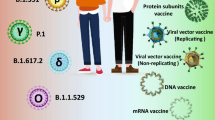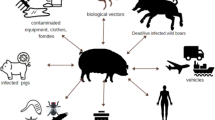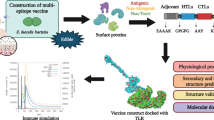Abstract
Live vaccine used in Russia against tularemia is based on Francisella tularensis subsp. holarctica NIIEG vaccine strain 15. This vaccine is highly effective, but fairly unstable. Therefore, the development of stable live tularemia vaccine with minimal side effects is rather pressing. F. tularensis iglC gene is required for intracellular production of the microbe, and recA gene is crucial for homologous recombination. Using methodology for allele removal, we deleted one copy of iglC gene and both copies of recA gene in F. tularensis vaccine strain. To achieve replacement of intact F. tularensis chromosome segments with modified segments, we constructed a novel pGM5 suicide vector based on pHV33 bireplicon plasmid. Modified chromosome segments contained a F. tularensis DNA fragment without 545 bp of iglC structural gene segment (in pGMΔiglC plasmid) and lacked a 1060-bp DNA fragment containing recA structural gene segment (pGMΔrecA plasmid). The constructed 15/23-lΔrecA mutant was capable to reproduce in macrophage-like J77A.l cell line with proliferation efficiency eight to ten times higher than parent vaccine strain 15. BALB/c mouse responded to immunization by 15/23-lΔrecA strain with a slight (about 2%) weight decrease compared to infection with strain 15 (about 14%). Bacteria of 15/23-lΔrecA strain were virtually incapable of maintaining germination in BALB/c murine spleen 14 days after invasion. In turn, bacteria of strain 15 were detected in murine spleen even after 21 days. Thus, F. tularensis 15/23-lΔrecA strain, which results in a lighter organismal reaction, can be successfully used as a basis for construction of stable live tularemia vaccines with minimal side effects.
Similar content being viewed by others
References
Olsuf’ev, N.G., Taksonomiya, mikrobiologiya i laboratornaya diagnostika vozbuditelya tulyaremii (Taxonomy, Microbiology, and Laboratory Diagnosis of the Causative Agent of Tularemia), Moscow: Meditsina, 1975.
Ellis, J., Oyston, P.C.F., Green, M., and Titball, R.W., Tularemia, Clin. Microbiol. Rev., 2002, Vol. 15, No. 4, pp. 631–646.
Medunitsyn, N.V., Vaktsinologiya (Vaccinology), Moscow: Triada-Kh, 1999.
Conlan, J.W. and Oyston, P.C.E., Vaccines against Francisella tularensis, Ann. NY Acad. Sci., 2007, Vol. 1105, pp. 325–350.
Rohmen, L., Brittnacher, M., Svensson, K., Buckley, D., Haugen, E., Zhou, Y., et al., Potential source of Francisella tularensis live vaccine strain attenuation determined by genome comparison, Infect. Immun., 2006, Vol. 74, No. 12, pp. 6895–6906.
Eigelsbach, H.T. and Downs, C.M., Prophylactic effectiveness of live and killed tularemia vaccines. I. Production of vaccine and evaluation in the white mouse and guinea pig, J. Immunol., 1961, Vol. 87, pp. 415–425.
Sandstrom, G., The tularemia vaccine, J. Chem. Technol. Biotechnol., 1994, Vol. 59, pp. 315–320.
Osnovnye trebovaniya k vaktsinnym shtammam tulyaremiinogo mikroba. Metodicheskie ukazaniya. MU 3.3.1.2161–07 (Basic Requirements for Tularemia Microbe Vaccine Strains: Guidelines, MU 3.3.1.2161–07), Moscow: Federal’nyi tsentr gigieny i epidemiologii Rospotrebnadzora, 2007.
Golovliov, I., Sjostedt, A., Mokrievich, A., and Pavlov, V., A method for allelic replacement in Francisella tularensis, FEMS Microbiol. Letts., 2003, Vol. 222, pp. 273–280.
Maier, T.M., Havig, A., Casey, M., Nano, F.E., Frank, D.W., and Zahrt, T.C., Construction and characterization of a highly efficient Francisella shuttle plasmid, Appl. Environ. Microbiol., 2004, Vol. 70, pp. 7511–7519.
Broekhuijsen, M., Larsson, P., Johansson, A., Bystrom, M., Eriksson, U., Larsson, E., et al., Genome-wide DNA microarray analysis of Francisella tularensis strains demonstrates extensive genetic conservation within the species but identifies regions that are unique to the highly virulent F. tularensis subsp. tularensis, J. Clin. Microbiol., 2003, Vol. 41, pp. 2924–2931.
Twine, S.M., Mykytczuk, N.C., Petit, M.D., Shen, H., Sjostedt, A., Wayne, C.J., et al., In vivo proteomic analysis of the intracellular bacterial pathogen, Francisella tularensis, isolated from mouse spleen, Biochem. Biophys. Res. Commun., 2006, Vol. 345, pp. 1621–1633.
Larsson, P., Oyston, P.C.F., Chain, P., Chu, M.C., Duffield, M., Fuxelius, H.H., et al., The complete genome sequence of Francisella tularensis, the causative agent of tularemia, Nat. Genet., 2005, Vol. 37, pp. 153–159.
Mokrievich, A.N., Vakhrameeva, G.M., Mironova, R.I., Kombarova, T.I., Titareva, G.M., Kravchenko, T.B., et al., Construction and investigation of the vaccine strain of Francisella tularensis without iglC genes. Communication 1, Probl. Osobo Opasn. Infekts., 2013, Vol. 117, No. 3, pp. 70–74.
Lapin, A.A., Kravchenko, T.B., Mokrievich, A.N., Vakhrameeva, G.M., Kombarova, T.I., Dyatlov, I.A., et al., Study of the UV irradiation and nalidicsic acid effect on the RecA-protein induction in Francisella tularensis 15/10 cells, Probl. Osobo Opasn. Infekts., 2011, Vol. 109, No. 3, pp. 36–39.
Lapin, A.A., Mokrievich, A.N., Vakhrameeva, G.M., Kombarova, T.I., Bakhteeva, I.V., Dyatlov, I.A., et al., Immunobiological properties of Francisella tularensis 15/10 strain with deleted recA gene, Probl. Osobo Opasn. Infekts., 2011, Vol. 110, No. 4, pp. 65–67.
Woodcock, D.M., Crowther, P.J., Doherty, J., Jefferson, S., DeCruz, E., Noyer-Weidner, M., et al., Quantitative evaluation of Escherichia coli host strains for tolerance to cytosine methylation in plasmid and phage recombinants, Nucleic Acids Res., 1989, Vol. 17, pp. 3469–3478.
Ehrlich, S.D., DNA cloning in bacillus subtilis, Proc. Natl. Acad. Sci. U.S.A., 1978, Vol. 75, pp. 1433–1436.
National Research Council. Guide for the Care and Use of Laboratory Animals, 8th ed., Washington, DC: National Academy Press, 2010.
Miller, J., Experiments in Molecular Genetics, New York Cold Spring Harbor, 1972; Moscow: Mir, 1976.
Lapin, A.A., Pavlov, V.M., Mokrievich, A.N., Domotenko, L.V., and Khramov, M.V., Simple liquid nutrient medium for molecular genetic investigations of Francisella tularensis, Probl. Osobo Opasn. Infekts., 2009, Vol. 102, No. 4, pp. 66–67.
Maniatis, T., Fritsch, E. F., and Sambrook, J. Molecular Cloning, Cold Spring Harbor, New York Cold Spring Harbor Lab. Press, 1982; Moscow: Mir, 1984.
Pavlov, V.M., Mokrievich, A.N., and Volkovoy, K., Cryptic plasmid pFNL10 from Francisella novicidalike F6168: the base of plasmid vectors for Francisella tularensis, FEMS Immunol. Med. Microbiol., 1996, Vol. 13, pp. 253–256.
Pomerantsev, A.P., Golovliov, I.R., Ohara, Y., Mokrievich, A.N., Obuchi, M., Norqvist, A., et al., Genetic organization of the Francisella plasmid pFNL10, Plasmid, 2001, Vol. 46, No. 3, pp. 210–222.
Uchitel’, I.Ya., Makrofagi v immunitete (Macrophages in Immunity), Moscow: Meditsina, 1978.
Goze, A. and Ehrlich, S.D., Replication of plasmids from Staphyllococcus aureus in Escherichia coli, Proc. Natl. Acad. Sci. U.S.A., 1980, Vol. 77, pp. 7333–7337.
Author information
Authors and Affiliations
Corresponding author
Additional information
Original Russian Text © A.N. Mokrievich, G.N. Vakhrameeva, G.M. Titareva, I.V. Bakhteeva, R.I. Mironova, T.I. Kombarova, T.B. Kravchenko, I.A. Dyatlov, V.M. Pavlov, 2015, published in Molekulyarnaya Genetika, Mikrobiologiya i Virusologiya, 2015, No. 3, pp. 33–39.
About this article
Cite this article
Mokrievich, A.N., Vakhrameeva, G.N., Titareva, G.M. et al. Construction and characterization of Francisella tularensis vaccine strain with a single copy of iglC gene and lacking recA gene. Mol. Genet. Microbiol. Virol. 30, 148–156 (2015). https://doi.org/10.3103/S0891416815030039
Received:
Published:
Issue Date:
DOI: https://doi.org/10.3103/S0891416815030039




